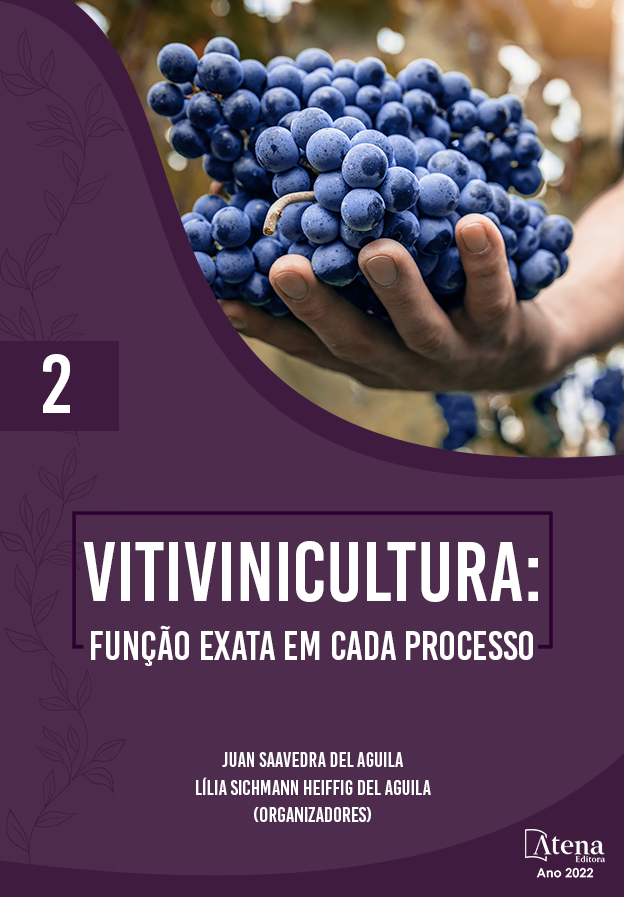
INSERÇÃO DE MINHOCAS NATIVAS EM COMPOSTAGEM ELABORADA COM RESÍDUOS ORIGINADOS DA PODA DE Vitis vinífera
A compostagem e a vermicompostagem são técnicas idealizadas para se obter mais rapidamente e em melhores condições a desejada estabilização da matéria orgânica. O trabalho teve por objetivo avaliar o efeito da inserção de minhocas nativas na elaboração de compostagem através dos resíduos oriundos da poda de videiras Vitis vinífera (galhos e folhas) das variedades Cabernet Sauvignon, Merlot e Viognier provenientes de vinhedo comercial da vinícola Casa Geraldo no município de Andradas, MG. O experimento foi iniciado em setembro de 2020. Para a elaboração da compostagem foram utilizadas 3 caixas plásticas de 10 litros. A primeira caixa adicionou-se 7Kg de substrato comercial (testemunha). Na segunda caixa foi adicionado 7kg de substrato comercial e 3kg de folhas e serragem dos sarmentos (sendo 1Kg de cada variedade). A terceira caixa teve os mesmos resíduos da segunda aliado a colocação de 40 minhocas nativas. As caixas plásticas foram forradas com saco de lixo previamente perfurado para drenar o chorume. Efetuou-se o revolvimento manual para promover aeração e acelerar a decomposição dos resíduos, bem como a manutenção da umidade, pela rega, conforme o aspecto e sensação ao tato do composto orgânico. Ao final do experimento, em dezembro de 2020, foi realizada a contagem de minhocas e avaliação visual do aspecto da compostagem depois de pronta. As amostras do substrato comercial, compostagem e vermicompostagem foram encaminhadas a um Laboratório de Solos, para avaliação dos teores de matéria orgânica, acidez e nutrientes minerais. Após aproximadamente três meses de experimento, os tratamentos de compostagem apresentaram coloração escura, odor agradável e decomposição total dos resíduos da poda das uvas viníferas. As minhocas dobraram seu quantitativo inicial. A vermicompostagem e a compostagem apresentaram incrementos expressivos de matéria orgânica e macronutrientes como potássio, fósforo, cálcio e magnésio, além de aumento de CTC e valores de pH próximos a neutralidade.
INSERÇÃO DE MINHOCAS NATIVAS EM COMPOSTAGEM ELABORADA COM RESÍDUOS ORIGINADOS DA PODA DE Vitis vinífera
-
DOI: 10.22533/at.ed.0942207033
-
Palavras-chave: adubação orgânica, Vitivinicultura, composto orgânico
-
Keywords: organic fertilization, Viticulture, organic compost
-
Abstract:
Composting and vermicomposting are techniques designed to obtain the desired stabilization of organic matter faster and in better conditions. The objective of this work was to evaluate the effect of the insertion of native earthworms in the composting process through the residues from the pruning of Vitis vinífera of the Cabernet Sauvignon, Merlot and Viognier varieties from the commercial vineyard of the Casa Geraldo winery in the municipality from Andradas, MG. The experiment started in September 2020. Three 10-liter plastic boxes were used to prepare the compost. The first box was added with 7Kg of commercial substrate (control). In the second box, 7kg of commercial substrate and 3kg of leaves and sawdust from the shoots were added (1kg of each variety). The third box had the same residues as the second, allied to the placement of 40 native worms. The plastic boxes were lined with a previously perforated garbage bag to drain the slurry. Manual turning was carried out to promote aeration and accelerate the decomposition of the residues, as well as the maintenance of humidity, through irrigation, according to the appearance and feel of the organic compost. At the end of the experiment, in December 2020, earthworms were counted and visual evaluation of the appearance of the compost after it was ready. The commercial substrate, compost and vermicompost samples were sent to a Soil Laboratory for evaluation of organic matter, acidity and mineral nutrients. After approximately three months, the compost treatments showed a dark color, pleasant odor and total decomposition of the pruning residues of the wine grapes. The earthworms doubled their initial quantity. Vermicomposting and composting showed significant increases in organic matter and macronutrients such as potassium, phosphorus, calcium and magnesium, in addition to an increase in CTC and pH values close to neutrality.
-
Número de páginas: 15
- Luciano Vilela
- Etiane Skrebsky Quadros


